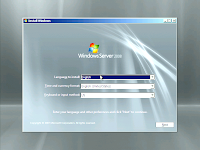Method 1. Set the hard drive as your boot drive
- Step 1:Enter your BIOS, go to the Boot section and check your boot priority list.
- Step 2:If your boot drive (SSD/HDD) is not at the top, make it your number one priority rather than Windows Boot Manager or USB HDD or DVD ROM for example.
- Step 3:Save and exit the BIOS.
- Step 4:Reboot.
Method 2. Try booting your computer in safe mode
- Step 1:Hold the Power Button down for five seconds or until the computer shuts down.
- Step 2:Press the Power button again to turn it on.
- Step 3:The PC should say Windows failed to start or something along those lines.
- Step 4:Choose Advanced Repair Options > Troubleshoot > Advanced Options > Start up Settings.
- Step 5:Click Restart and choose Safe Mode to enter safe mode.
- Step 6:Log in and then reboot.
Method 3. CMD CHKDSK
- Step 1:Navigate to Troubleshoot in the same way as in Method 2.
- Step 2:Choose Advanced Options and then Command Prompt.
- Step 3:Type fsutil dirty query C: (replace C: with your own boot drive label).
- Step 4:type chkntfs /x C: (replace C: with your own boot drive label)
- Step 5:Type: exit.
- Step 6:Reboot.
Method 4. Disable Automatic Repair (You need the Windows 10 DVD/USB Installation Media)
- Step 1:Insert your Installation Media and boot from it.
- Step 2:On the bottom left it should say "Repair your computer", so click that.
- Step 3:Choose Troubleshoot and then Command Prompt.
- Step 4:type bcdedit.)
- Step 5:Type: exit.
- Step 6:Reboot.
Method 5. System Restore
Part 1. Windows 10 Startup Repair
Your Windows 10 computer may not be started up due to damaged BCD (Boot Configuration Data) settings, blue screen of death and more. If it happens, you are capable of fixing the Windows 10 startup problems via the native Windows 10 repair tool - Startup Repair. Here are the steps provided for each of you.
- Launch the Windows 10 Advanced Startup Options menu by pressing F11.
- Go to Troubleshoot > Advanced options > Startup Repair.
- Wait for a few minutes and Windows 10 will fix the startup problem.





